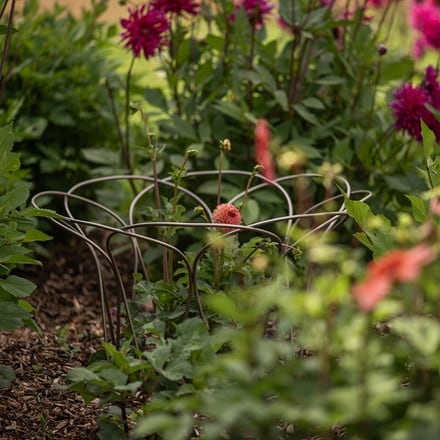Tulipa 'Pink Jimmy'
triumph tulip bulbs
- 21 × bulbs
- £21.00 £1.00 each
- available to order from winter
- 7 × bulbs
- £7.99 £1.14 each
- available to order from winter
Delivery options
- Bulbs (only) £4.99
- Position: full sun
- Soil: moderately fertile, moist but well-drained soil, or general purpose compost
- Rate of growth: average
- Flowering period: April to May
- Hardiness: fully hardy
- Bulb size: 11/12
A striking Triumph tulip cultivar with single, cup-shaped blooms in rich rose pink, softly edged with salmon-orange. The petals have a lightly brushed appearance, adding depth and contrast when planted alongside maroon, orange, or other pink tulips.
The sturdy nature of this cultivar makes it exceptionally suitable for container growing, where its concentrated colour creates focal point drama on patios and balconies.
Emerging from a hardy perennial bulb, the upright, lance-shaped green foliage supports mid-spring flowering. Tulipa 'Pink Jimmy' also performs well in borders, and cut flower displays, and pairs attractively with related companions like 'Jimmy' and 'Salmon Jimmy'.
The sturdy nature of this cultivar makes it exceptionally suitable for container growing, where its concentrated colour creates focal point drama on patios and balconies.
Emerging from a hardy perennial bulb, the upright, lance-shaped green foliage supports mid-spring flowering. Tulipa 'Pink Jimmy' also performs well in borders, and cut flower displays, and pairs attractively with related companions like 'Jimmy' and 'Salmon Jimmy'.
Using fresh, good-quality compost, plant bulbs in pots from September to November. For borders, we advise waiting until after the first frosts (typically mid-October to early December depending on your location) to reduce the risk of potential disease such as Tulip Fire.
Plant bulbs 15-20cm (6-8in) deep and 10-15cm (4-6in) apart in fertile, well-drained soil. Alternatively, allow 7-9 bulbs per 30cm sq or 60-75 bulbs per m². If you’re unable to plant your bulbs immediately, they can be stored in a cool environment with good air circulation. Remove all the packaging and place them in a loose-weave jute sack before labelling and hanging up in a dry, unheated garden shed or well-ventilated greenhouse.
In spring, when the plants are in active growth, apply a high-potash fertiliser (like Tomorite) each week until the leaves start to die back. Pinch off the spent flower heads as the petals fall, and let the stem and foliage die back naturally. The bulbs can then be lifted and discarded, or cleaned, dried and stored (as before) for replanting the following autumn.
Plant bulbs 15-20cm (6-8in) deep and 10-15cm (4-6in) apart in fertile, well-drained soil. Alternatively, allow 7-9 bulbs per 30cm sq or 60-75 bulbs per m². If you’re unable to plant your bulbs immediately, they can be stored in a cool environment with good air circulation. Remove all the packaging and place them in a loose-weave jute sack before labelling and hanging up in a dry, unheated garden shed or well-ventilated greenhouse.
In spring, when the plants are in active growth, apply a high-potash fertiliser (like Tomorite) each week until the leaves start to die back. Pinch off the spent flower heads as the petals fall, and let the stem and foliage die back naturally. The bulbs can then be lifted and discarded, or cleaned, dried and stored (as before) for replanting the following autumn.
- Humans: Harmful if eaten; skin allergen; Pets: Ornamental bulbs - not to be eaten


